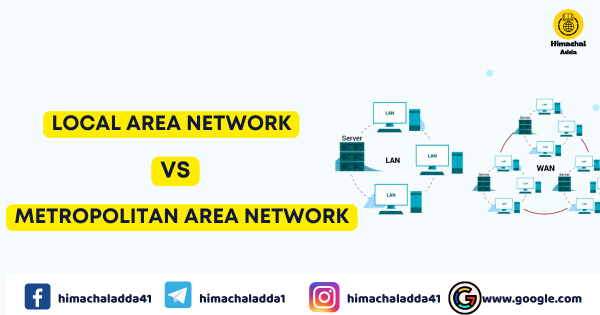Difference between LAN and MAN
LAN stands for Local Area Network, which is a network that connects computers in a small area, such as a home, office, or school. MAN stands for Metropolitan Area Network, which is a network that connects computers in a larger area, such as a city or a town.
Some differences between LAN and MAN are:
| Local Area Network (LAN) | Metropolitan Area Network (MAN) |
|---|---|
| 1) A LAN, or Local Area Network, is a network that covers a small geographic area, like a single building, a school, or a home. It connects devices like computers, printers, and smartphones within this limited space. | 1) A MAN, or Metropolitan Area Network, is a network that covers a larger area, like an entire city or a campus. It connects multiple LANs in different locations within this larger area. |
| 2) LANs are typically owned and controlled by a single organization or entity. For example, a school manages the LAN within its school building. | 2) MANs may involve multiple organizations collaborating to create and maintain the network, especially when it's used for city-wide connectivity. |
| 3)LANs offer high-speed data transfer, often reaching gigabit speeds. This ensures fast communication between devices within a small area. | 3) MANs may have slightly lower data transfer speeds compared to LANs but still provide efficient data communication over larger distances. |
| 4) LANs often use wired technologies like Ethernet cables or wireless technologies like Wi-Fi for connecting devices. They typically have simpler topologies. | 4) MANs might employ a combination of wired and wireless technologies, along with more complex network topologies to cover a larger area efficiently. |
| 5) Some examples of LAN are: a) A network of computers in a classroom or a library. b) A network of devices in a home or an apartment. c) A network of printers and scanners in an office. | 5) Some examples of MAN are: a) A network of computers in different buildings of a university or a hospital. b) A network of devices in different branches of a bank or a company. c) A network of CCTV cameras and traffic lights in a city. |




